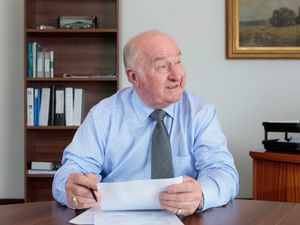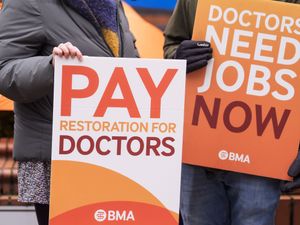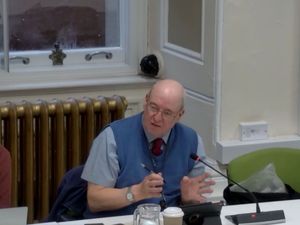£7 million rise in council tax income for West Midlands councils
West Midlands councils brought in over £7 million more in council tax during the first three months of this financial year than the year before, new figures reveal.
Wolverhampton Council brought in £2 million more, while in Dudley the figure was £2.3m, in Sandwell £1.8m and in Walsall £1m. Councils in Staffordshire also brought in hundreds of thousands pounds more in council tax.
But the Local Government Association has warned that many councils are now beyond the point where rising council tax income can plug their funding gaps.
Ministry of Housing, Communities and Local Government data shows Wolverhampton Council received £31.29 in council tax between April and June this year.
This was £2.02 million more than the same time last year, a rise of 6.9 per cent.
That's higher than the England average, with income from council tax increasing by 5.7 per cent across the country.
The Local Government Association says that councils have no choice but to increase bills for rate payers, but warns that the hikes will still not be enough to cover the funding gaps faced by local authorities.
A spokesman said: "Faced with severe funding pressures, many councils feel they are being left with little choice but to ask residents to pay more to help them try and protect their local services."
Boost
The boost to Wolverhampton Council's council tax income follows an average hike of 5.9 per cent on residents' tax bills in April. Council tax bills for a Band D property – the most common price bracket – in the area now stand at £1,830, up from £1,728 last year.
Dudley Council received £41.11 million in council tax between April and June this year. This was £2.34 million more than the same time last year, a rise of six per cent.
The boost to Dudley Council’s council tax income follows an average hike of 5.7 per cent on residents’ tax bills in April. Council tax bills for a Band D property in the area now stand at £1,542, up from £1,459 last year.
Sandwell Council received £33.92 million in council tax between April and June this year.
This was £1.78 million more than the same time last year, a rise of 5.5 per cent.
The boost to Sandwell Council’s council tax income follows an average hike of 5.2 per cent on residents’ tax bills in April. Council tax bills for a Band D property in the area now stand at £1,615, up from £1,535 last year.
Way below the average
Walsall Council received £36.21 million in council tax between April and June this year.
This was £1.03 million more than the same time last year, a rise of 2.9 per cent. That’s way below the England average, of 5.7 per cent.
The boost to Walsall Council’s council tax income follows an average hike of five per cent on residents’ tax bills in April. Council tax bills for a Band D property – the most common price bracket – in the area now stand at £1,928, up from £1,836 last year.
South Staffordshire Council received £19.08 million in council tax between April and June this year. This was £914,000 more than the same time last year, a rise of five per cent.
Stafford Council brought in £23.24 million in council tax during the same period this year. This was £989,000 more than the same time last year, a rise of 4.4 per cent.
Cannock Chase Council received £14.5 million in council tax between April and June this year. This was £601,000 more than the same time last a year, a rise of 4.3 per cent.
The boost to South Staffordshire Council’s council tax income follows an average hike of 4.2 per cent on residents’ tax bills in April. Average hikes of four per cent and 3.8 per cent took place in Stafford and Cannock Chase respectively.
Council tax bills for a Band D property – the most common price bracket – in South Staffordshire now stand at £1,710, up from £1,641 last year; in Stafford they now stand at £1,717, up from £1,651 last year; and in Cannock Chase they now stand at £1,779, up from £1,714 last year.
Council tax bills up but ‘still not enough’
The increase in council tax receipts in the West Midlands and Staffordshire comes against a background of years of cuts in funding from central government, and increasing costs of providing adult social care, caused largely by an ageing population.
The picture is reflected across the country where councils brought in £9.07 billion through council tax in the three months to June – an increase of more than £486 million on last year.
On top of council tax, local authorities also receive funding through central government grants to help them run public services.
But a new parliamentary report from the Housing, Communities and Local Government Select Committee has warned that significant cuts to this government funding has left councils with no choice but to cut back on services.
Uncertainty
“Local government has coped with a prolonged period of real-terms spending reduction which is without parallel in modern times,” the report said.
“The current uncertainty for local government and the lack of funding for services must be addressed as a matter of urgency.”
The comment has been backed up by the Local Government Association, which says rate increases will not cover the gap in funding at councils across the country.
A spokesman said “Vital local services provided by councils face a funding gap of more than £5 billion next year."




